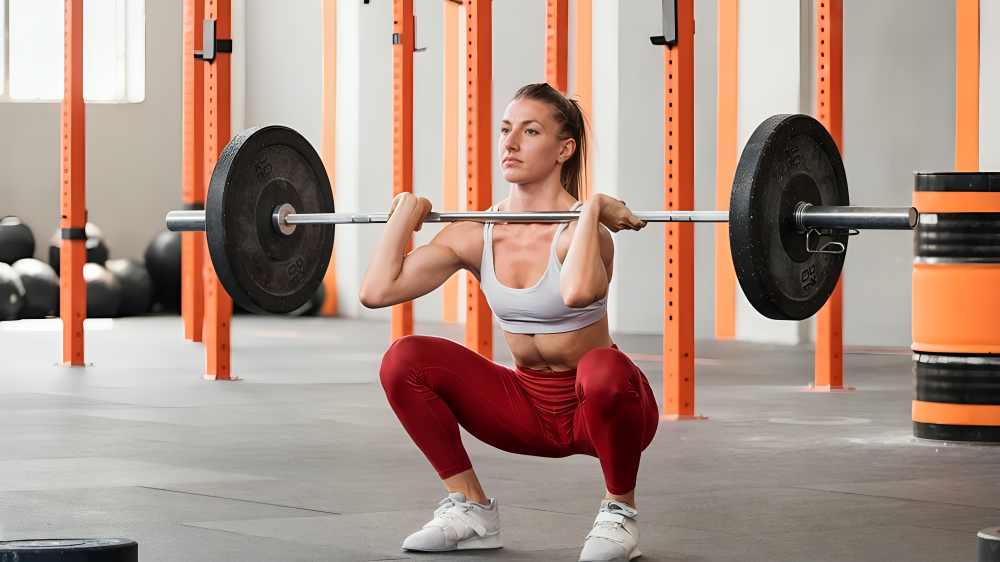
How to Perform a Front Squat
Setup Barbell
Place a barbell at about chest height in a squat rack.
Stand over the bar with your feet shoulder-width apart
Grip the bar with your hands slightly wider than shoulder-width apart while your elbows are pointing forward, not down.
Place the Bar on Your Back
Lift your elbows up so your upper arms are parallel to the ground.
The bar will rest across your front shoulders, supported by your fingers and palms.
Keep your chest up and core tight.
Step Back and Set
Rack the bar back by retreating a few steps
Stand with feet about shoulder-width apart with toes slightly out to the side
Take a deep breath in, engaged your core, preparing to squat.
Drop Down to squat
Step back into hips that lower the body by bending the knees.
Keep chest up and elbow’s high.
Bend to a level as low as you can or to parallel with your thighs to the ground, if possible.
Keep your heels on the ground.
Stand Up
From the position you are now in, push off from the heels to straighten out your legs and stand. You will be exhaling while you stand up and your chest stays up and your core is tightened during the return to standing.
Benefits For Your Quads
Quadriceps Targetted
The front squat places far more emphasis on the quadriceps compared to the back squat. Why? It is because of the position of the bar. Since you have weight in front, the quads have to do more work to make it upright and propel you forward again. If you want to build stronger, leaner quad muscles, this is the movement for you.
Builds Core Strength
It takes a ton of core stability to keep the barbell steady on your shoulders. Your abs, obliques, and lower back all are working to maintain this position over the duration of the lift. This makes front squats a great exercise for core strength development.
Easier on the Lower Back
For some, regular back squats can bother the lower back, especially if poor form compromises the proper positioning of the weight. The front squat is a little easier on the spine, since the weight is positioned closer to your center of gravity. That might make it a good option for people who have had low back issues.
Improved Mobility
Being a front squat requires more flexibility in hips, ankles, and shoulders, so you should see good mobility with range of motion improvements with practice. Bonus: It’s great for other exercises, too: deadlifts or lunges!
Trains Whole Body Strength
Although the front squat focuses on the legs and core, it also hits a lot of other muscles as well. Stabilizing the bar requires your upper back, shoulders, and arms. So, you get a pretty complete full-body exercise with every squat
It’s Here sit-ups how to do it and what are the benefits
FAQs
1. Do front squats or back squats?
It just depends on what you want to use them for! Front squats target your quads and core, and are incredible for overall leg strength in your back.
2. Does it feel weird to do front squats at first?
Yes, front squats could take time getting used to – quite particularly, the barbell position. So, start light and practice often to feel comfortable.
3. Do front squats replace regular squats?
Front squats are another good alternative, but you shouldn’t choose only one. Mixing both variations will help you to be balanced in strength building.

